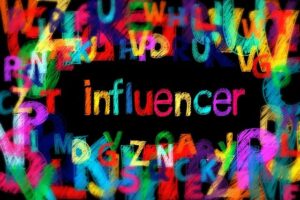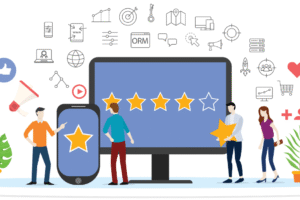In 2025, lead generation is no longer just about quantity—it’s about quality, speed, and personalization. Businesses across industries are doubling down on strategies that attract and convert the right prospects. But a familiar question still remains: Should you focus on inbound or outbound lead generation?
Both methods offer value, but the landscape has shifted. If you’re working with a lead generation agency or considering partnering with one, understanding how these approaches differ—and which one works better today—can significantly impact your ROI.
In this blog, we’ll explore the latest trends in inbound and outbound lead generation, how they’ve evolved in 2025, and which strategy aligns best with your business goals.
What Is Inbound Lead Generation?
Inbound lead generation is about attracting prospects to your business through valuable content and organic experiences. Instead of chasing leads, you create resources that pull them toward you.
Examples include:
-
SEO-optimized blogs and landing pages
-
Whitepapers, case studies, and eBooks
-
Webinars and podcasts
-
Social media engagement
-
Email newsletters
-
Organic search and content marketing
Inbound is long-term, trust-focused, and often favored by companies that want sustainable growth and brand authority.
What Is Outbound Lead Generation?
Outbound lead generation, by contrast, is proactive outreach. Your business (or your lead generation agency) identifies potential customers and reaches out to them directly.
Common outbound tactics include:
-
Cold calling or emailing
-
LinkedIn outreach
-
Display and PPC advertising
-
Purchased lead lists
-
Direct messaging (via SMS or social media)
Outbound is often faster but requires careful targeting to avoid being intrusive or irrelevant.
What’s Changed in 2025?
Lead generation in 2025 is shaped by AI-driven personalization, tighter privacy regulations (like GDPR and PDPL), and heightened customer expectations. Here’s how inbound and outbound have adapted:
Inbound Evolution:
-
AI tools now help optimize content based on real-time search intent.
-
Video content, especially short-form (TikTok, Reels), plays a central role in SEO and engagement.
-
Zero-click content and AI-generated summaries are driving brand visibility even without clicks.
Outbound Evolution:
-
Hyper-personalized cold emails use behavioral data and LinkedIn insights.
-
Chatbots and automation tools handle the first touch, followed by human reps.
-
Dynamic ads use real-time behavior to adjust messaging instantly.
Working with a lead generation agency in 2025 means having access to both advanced inbound content creation and precision-targeted outbound campaigns, often working in tandem.
Inbound vs. Outbound: Head-to-Head Comparison
| Feature/Factor | Inbound Lead Generation | Outbound Lead Generation |
|---|---|---|
| Speed of Results | Slow to build but long-lasting | Faster initial results |
| Cost | Higher upfront content investment | Ongoing cost per lead or outreach |
| Lead Quality | Typically higher (self-qualified) | Varies based on targeting |
| Scalability | Scalable with SEO/content strategy | Scalable with automation tools |
| Trust & Brand Building | Excellent for authority and loyalty | Lower unless backed by strong messaging |
| Compliance Risk | Minimal if done right | Higher (must comply with spam laws) |
| Sustainability | Long-term ROI | Short-term bursts |
Which One Works Best in 2025?
Inbound Works Best If:
-
You’re building a long-term brand.
-
You sell high-ticket or complex products (e.g., SaaS, consulting).
-
You have a content marketing strategy in place.
-
SEO and organic traffic are a priority.
Outbound Works Best If:
-
You want fast, targeted results.
-
You operate in a competitive niche with a small TAM (Total Addressable Market).
-
Your sales team is skilled in closing direct leads.
-
You need to fill your pipeline quickly.
Most businesses in 2025 realize that a hybrid model, executed by a full-service lead generation agency, brings the best of both worlds: predictable inbound growth and outbound velocity.
Why Work with a Lead Generation Agency?
The complexity of modern lead generation requires specialized tools, experience, and consistency. A skilled lead generation agency will:
-
Build customized inbound content strategies (SEO blogs, gated assets, webinars).
-
Run and optimize outbound campaigns with laser-focused targeting.
-
Use analytics to track MQLs (Marketing Qualified Leads) and SQLs (Sales Qualified Leads).
-
Maintain compliance with evolving data privacy laws.
-
Provide campaign scalability as your business grows.
By combining inbound and outbound tactics under one roof, agencies help maximize your lead pipeline without overloading your internal teams.
Real-World Example: SaaS Startup Using Both Strategies
A Dubai-based SaaS startup working with a lead generation agency adopted the following plan:
-
Inbound: Weekly blog posts targeting long-tail keywords, LinkedIn thought leadership, and SEO landing pages.
-
Outbound: Cold email campaigns targeted at CTOs using job title + pain point segmentation, with automated follow-ups.
Results in 6 months:
-
3x increase in inbound traffic
-
56% email open rate and 22% reply rate from outbound
-
$300k in pipeline growth
This hybrid approach ensured short-term gains while establishing long-term credibility.
Final Thoughts
Inbound and outbound lead generation each offer unique advantages—and neither should exist in isolation. In 2025, successful businesses are those that leverage both methods in a strategic, data-driven way, often by partnering with a capable lead generation agency.
The key is alignment: knowing your audience, creating value, personalizing outreach, and tracking every step. Whether you’re nurturing cold prospects or attracting organic traffic, the right lead generation strategy turns interest into revenue.






